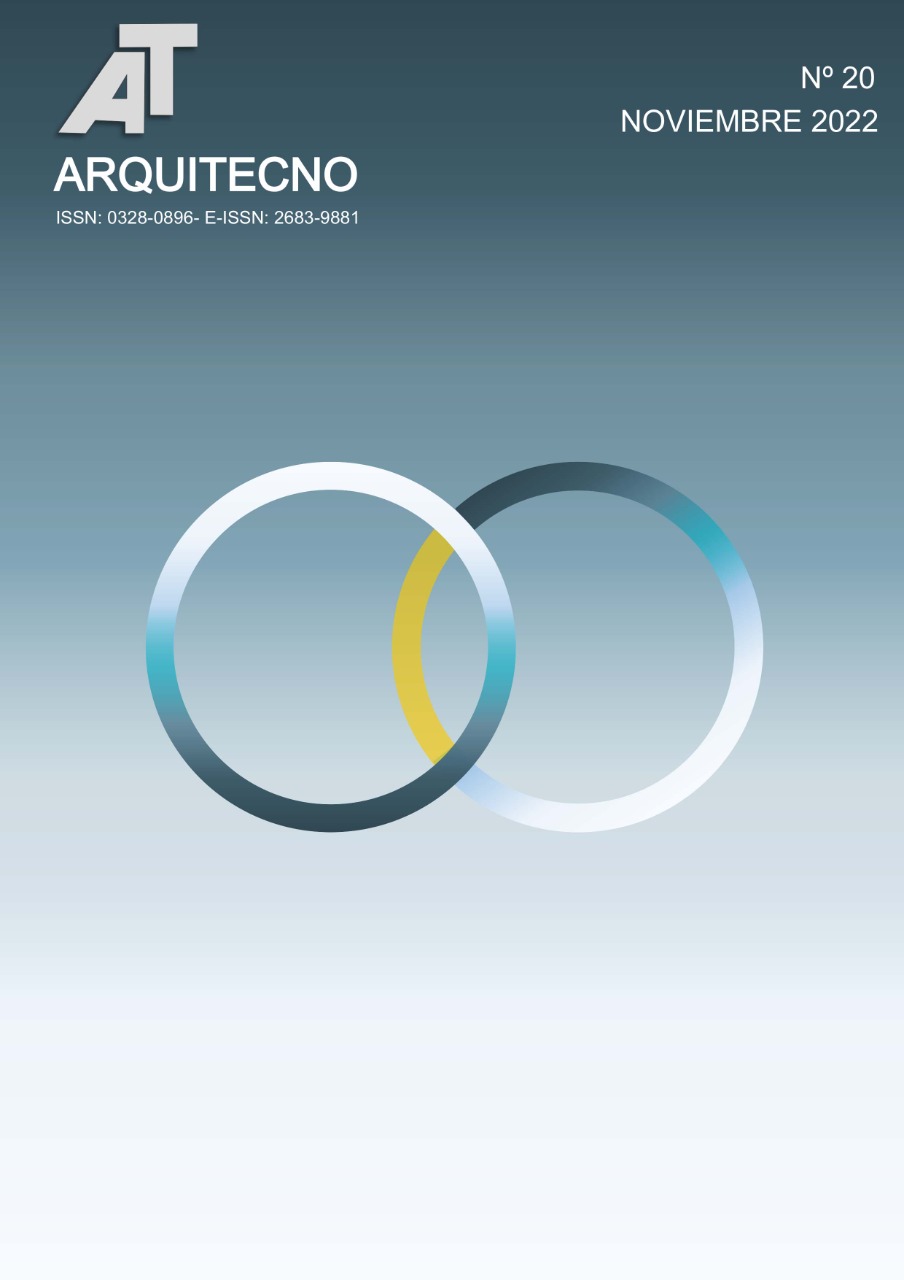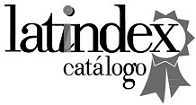Comportamiento térmico y balance energético neto de un edificio de oficina de Mendoza con tendencia hacia la energía casi nula (nZEB)
DOI:
https://doi.org/10.30972/arq.0206256Palavras-chave:
Edificios Energía Casi Nula, Eficiencia Energética, Arquitectura SustentableResumo
Los edificios energía casi nula (nearly Zero Energy Building - nZEB) surgen como estrategia de mitigación ante el cambio climático en el sector edilicio. Los requerimientos de energía primaria varían desde 25 kWh/m2/año a 120 kWh/m2/año, para climatización, agua caliente sanitaria, y sistemas auxiliares. Se realizó el monitoreo térmico y energético de un edificio de oficinas ubicado en el parque de desarrollo tecnológico (Polo TIC) de Godoy Cruz, Mendoza, Argentina (32º 93’ S y 68º50’ O, elevación de 750 m.s.n.m), clima templado árido frío (Bwk). El objetivo de este trabajo es diagnosticar el comportamiento térmico de un edificio de oficinas de bajo consumo y el balance energético neto para alcanzar energía casi nula (nZEB) en la región. Se estudiaron dos áreas del 2° piso, planta libre y oficina tipo box, el resultado fue 116 kWh/m2/año, favorable para disminuir el consumo energético y potenciar el aprovechamiento de energías limpias.
Referências
Andreoni Trentacoste, S. E., & Ganem Karlen, C. (2021). El rol activo del usuario en la búsqueda de confort térmico de viviendas en clima templado árido. Revista hábitat sustentable, 11(2), 8-21.
Beck, H. E., Zimmermann, N. E., McVicar, T. R., Vergopolan, N., Berg, A., & Wood, E. F. (2018). Presentand future Köppen-Geiger climate classification maps at 1-km resolution. Scientific data, 5(1), 1-12.
Calvente, & M., A. (2007). Resiliencia : un concepto clave para la sustentabilidad, 1–4.
Cao, X., Dai, X., & Liu, J. (2016). Building energy-consumption status worldwide and the state-of-the-art technologies for zero-energy buildings during the past decade. Energy and Buildings, 128, 198–213. https://doi.org/10.1016/j.enbuild.2016.06.089
Comisión Europea. (2010). Directiva 2010/31/UE relativa a la eficiencia energética de los edificios. Boletin Oficial, L135, 13–35.
Corredera, C., Czajkowski, J. D., & Gómez, A. F. (2005). Emisiones de gases efecto invernadero y consumo de energía en torres de oficinas. Avances en Energías Renovables y Medio Ambiente, 9.
Chai, J., Huang, P., & Sun, Y. (2019). Investigations of climate change impacts on net-zero energy building lifecycle performance in typical Chinese climate regions. Energy, 185, 176–189. https://doi.org/10.1016/j.energy.2019.07.055
Esteves, A., Oliva, A. L., & Gelardi, D. (1997). Nueva medida para considerar la forma en la conservación de energía en edificios. Revista de la Universidad de Mendoza.
Flores-Larsen, S., Filippín, C., & Barea, G. (2019). Impact of climate change on energy use and bioclimatic design of residential buildings in the 21st century in Argentina. Energy and Buildings, 184(December), 216–229. https://doi.org/10.1016/j.enbuild.2018.12.015
Givoni, B. (1992). Comfort, climate analysis and building design guidelines. Energy and buildings, 18(1), 11-23.
IRAM 11603 (2012). Instituto Argentino de Normalización y Certificación. Acondicionamiento térmico en Edificios: Clasificación Bioambiental de la República. Buenos Aires, Argentina.
Longobardi y Hancok. (2000) Field trip strategies. TIA 2000 Conference Proceedings. Oxford: Oxford Brookes University.
Nicol, J. F. y Humphreys, M. A. (2002). Adaptive thermal comfort and sustainable thermal standards for buildings, Energy and buildings, 34(6), 563–572.
Piderit, M., Vivanco, F., van Moeseke, G., & Attia, S. (2019). Net Zero Buildings—A Framework for an Integrated Policy in Chile. Sustainability, 11(5), 1494. https://doi.org/10.3390/su11051494
Sartori, I., Napolitano, A., & Voss, K. (2012). Net zero energy buildings: A consistent definition framework. Energy and Buildings, 48, 220–232. https://doi.org/10.1016/j.enbuild.2012.01.032
Servicio Meteorológico Nacional, (2021). https://www.argentina.gob.ar/smn
United Nations Environment Programme - Sustainable Buildings & Climate Initiative (UNEP-SBCI). (2009). Buildings and Climate Change: a Summary for Decision-Makers. París: UNEP-DTIE Sustainable Consumption & Production Branch.
Página web: https://www.sunnyportal.com,2021
Downloads
Publicado
Como Citar
Edição
Seção
Licença
Los autores ceden a Arquitecno los derechos de publicación de sus trabajos, toda vez que hayan sido admitidos como parte de alguno de sus números. Ellos, no obstante, retienen los derechos de propiedad intelectual y responsabilidad ética así como la posibilidad de dar difusión propia por los medios que consideren.





52.jpg)
